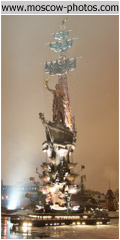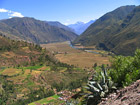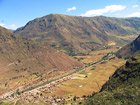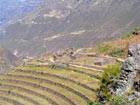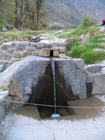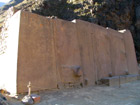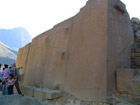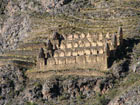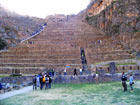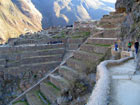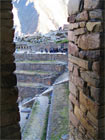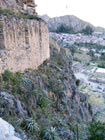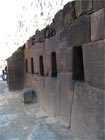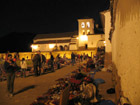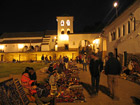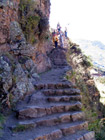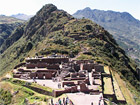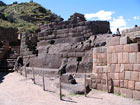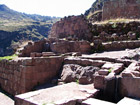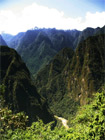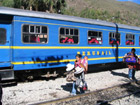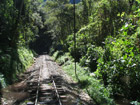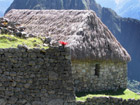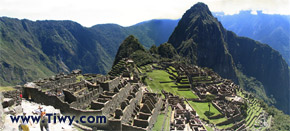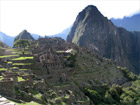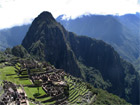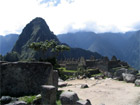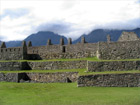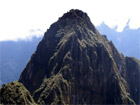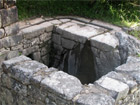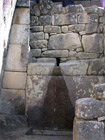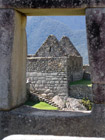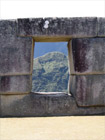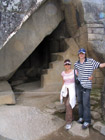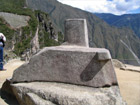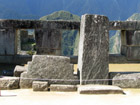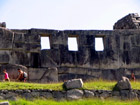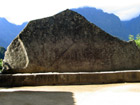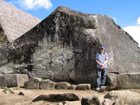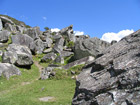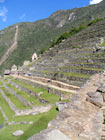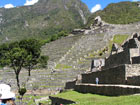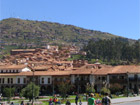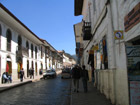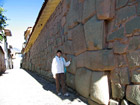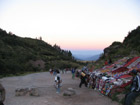|
Heart of the Inca's Empire
| |
Irina Nazarova, Peru (2006) |
» page 1 » page 2 |
Sacred valley of Incas.
The Vilcanota river valley is justly called the sacred valley of Incas. Its unusually fertile lands gave food to the major pert of the Empire and something has also remained for sale. There probably were not a single piece of uncultivated fertile land including the slopes.
Some terraces, made for ages, are still being used by local peasants.
A lot of cult and residential structures still remained in the valley. Among them are «tambos» - in a way camps, where travellers could have rest and food. It is worth mentioning that there were idle travellers in the Empire.
Only those, who fulfilled the certain state task, set for trips, therefore, rest, protection and food were always guaranteed to them. And warriors could replenish their stock of weapon and clothes. Owing to a big amount of stored food, no natural disasters could cause famine in the country. Spaniards estimated that with such stocks of food Incas could last more than one year.
The most amazing «tambos» is Ollantaytambo. And its principal structure – temple of the Sun - unfortunately was not completed because of conquistadors invasion . The size and ideal finishing of pink granite blocks, weighing 60-70 tons and 4 m high, cannot help but amaze. But the most amazing thing is that those construction blocks were worked out on the opposite slope of the valley in 6-7 kilometers away from Ollantaytambo. Finished and those that failed to «reach» the destination blocks, are still found over there and on the way to the temple. Local people call them «tired stones» and treat them with awesome trepidation. It is impossible to imagine how a man could shift such masses.
Another famous city in the valley is Pisac. Here remained a lot of religious and residential structures as well as the most picturesque terraces. Modern Pisac is famous for its market - the richest one in the whole valley. Here one can buy anything: starting from various souvenirs made of ceramics, pumpkins and alpaca wool to coca leaves, by using tea of which tourists try to escape from mountain disease.
Machu Picchu
Of course the main and the most desirable point of travellers destination is Machu Picchu, mountain with ruins of the city built, as thought, at the time of great Pachacutec. So many books and tourists reports have been written about Machu Picchu and, whatever I might write, would be the iteration.
As I think, the most principal charm of the ancient city is the harmony of strict geometric architectural forms and smooth lines of the mountains and valleys that surround Machu Picchu. No matter, from which point you look at the city – it ideally blends with the landscape. And no wonder that people come here not only for impressions but for spiritual energy as well: it is here that people look for mystical connection with space.
That is why I just suggest to enjoy the beauty at least to that degree, which can be rendered by amateur pictures.
In conclusion – some practical advice.
It is better to plan this trip in dry season – from April to November, as in the rain season, at best, you will enjoy the view of Machu Picchu through the haze of rain and at worst – you will not get there at all if the mountain streamer turns impassable for the bus. Such things rarely but happen.
Rather noticeable height in Cusco (3399 m) can unpredictably tell on your organism. Someone gets easily adapted but certain travellers feel very bad, so it is worth to have the pills for mountain disease and the first one should even be taken while in plane. You can make the process of acclimatization easier if you spend the first night either in the valley (for example in Ollantaytambo) or in Aguas Calientes, which are situated much lower. In latter case you will also gain a few hours for Machu Picchu and even catch the dawn there (they say it is unusually beautiful). And don't fail to take sun tan cream and warm jackets as in the mountains the sun radiation is high and the temperature difference is big.
You need at least three days if you want to have enough time to see all historic places of interest.
For your convenience and saving you should buy 2 tourist tickets that give you the right to see different sights. One of them includes about one and a half dozen of historic places in Cusco outskirts and a few, not the most interesting museums, and in another – the best museums and city churches.
And if you have spare time and you are physically fit and in ideal shape you can learn the heart of the Empire – walk to Machu Picchu on the road of Incas. On the way you can see a number of Incas structures, picturesque scenes and get the unusual charge of positive energy.
2006.
|


